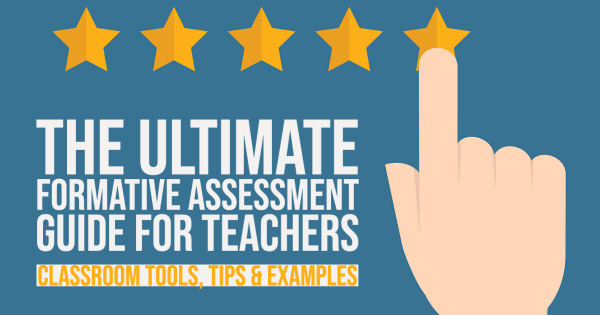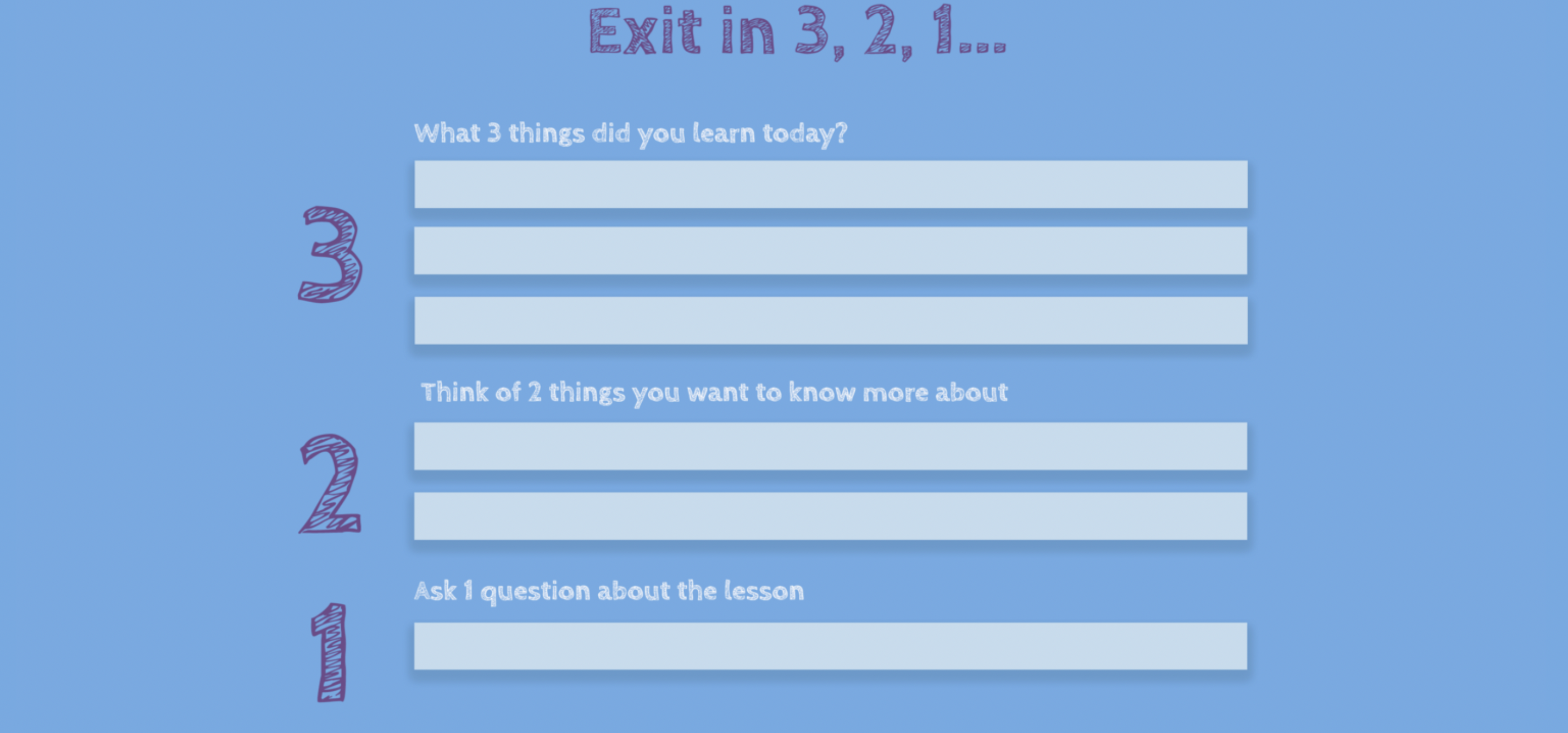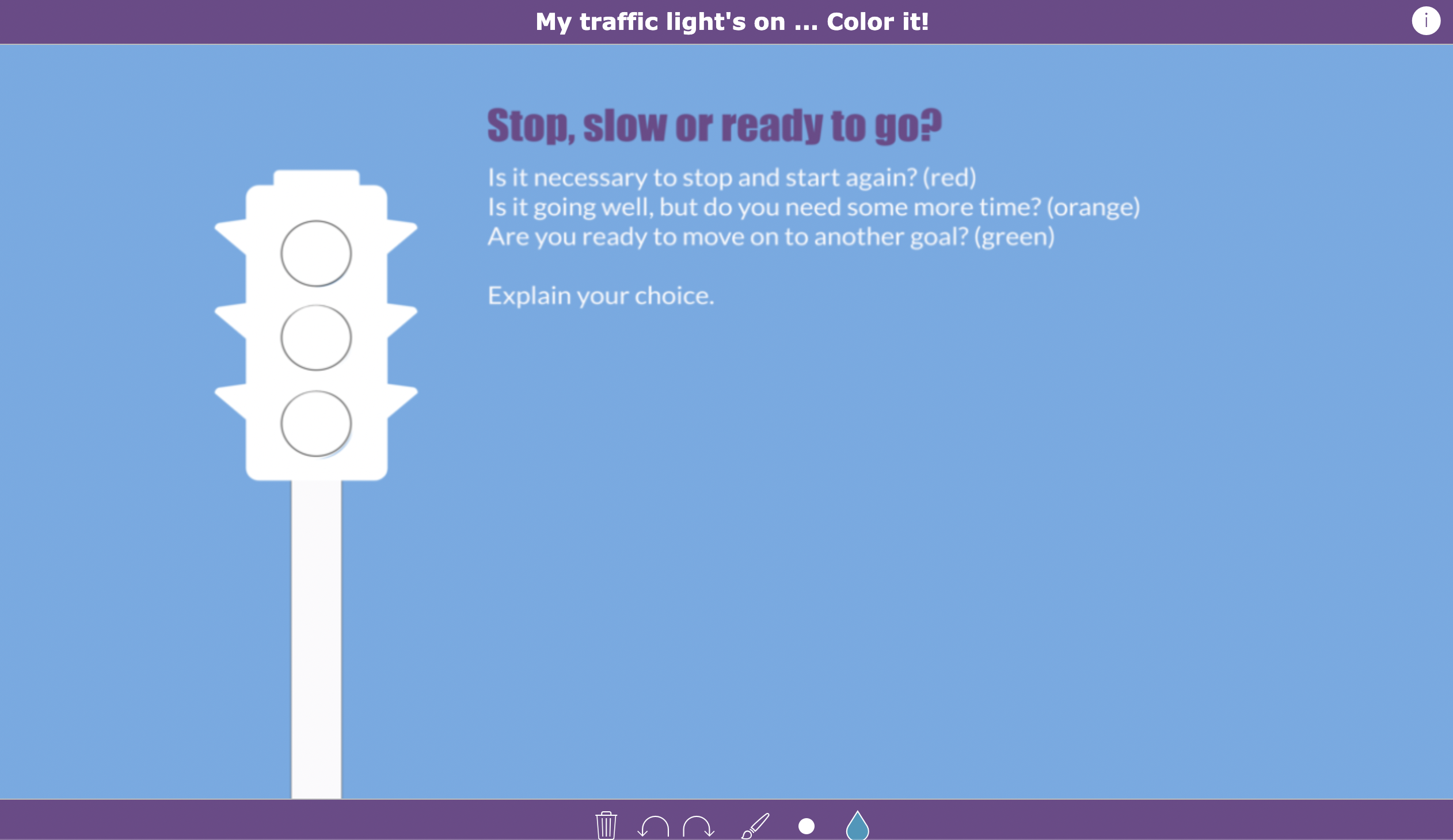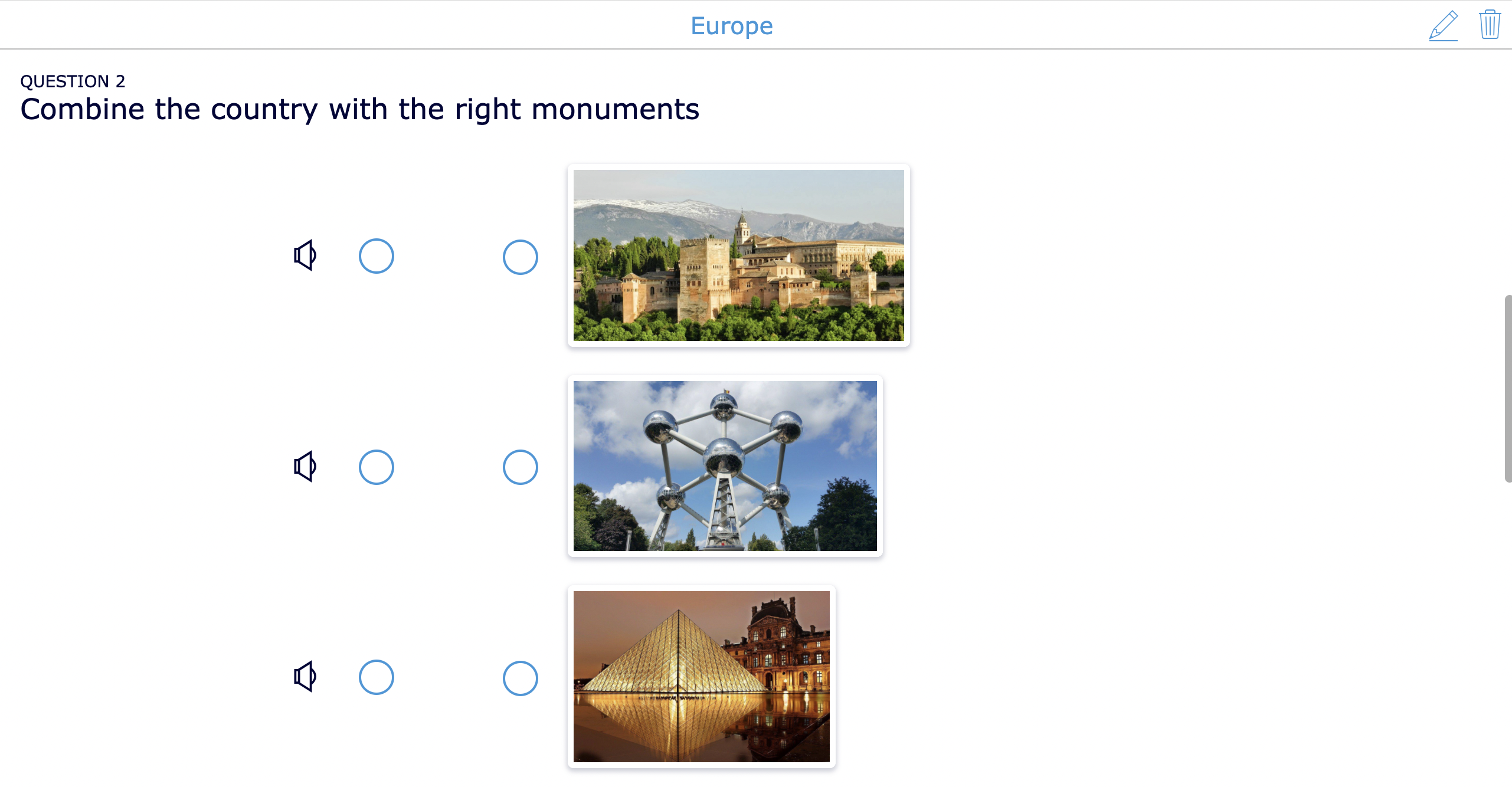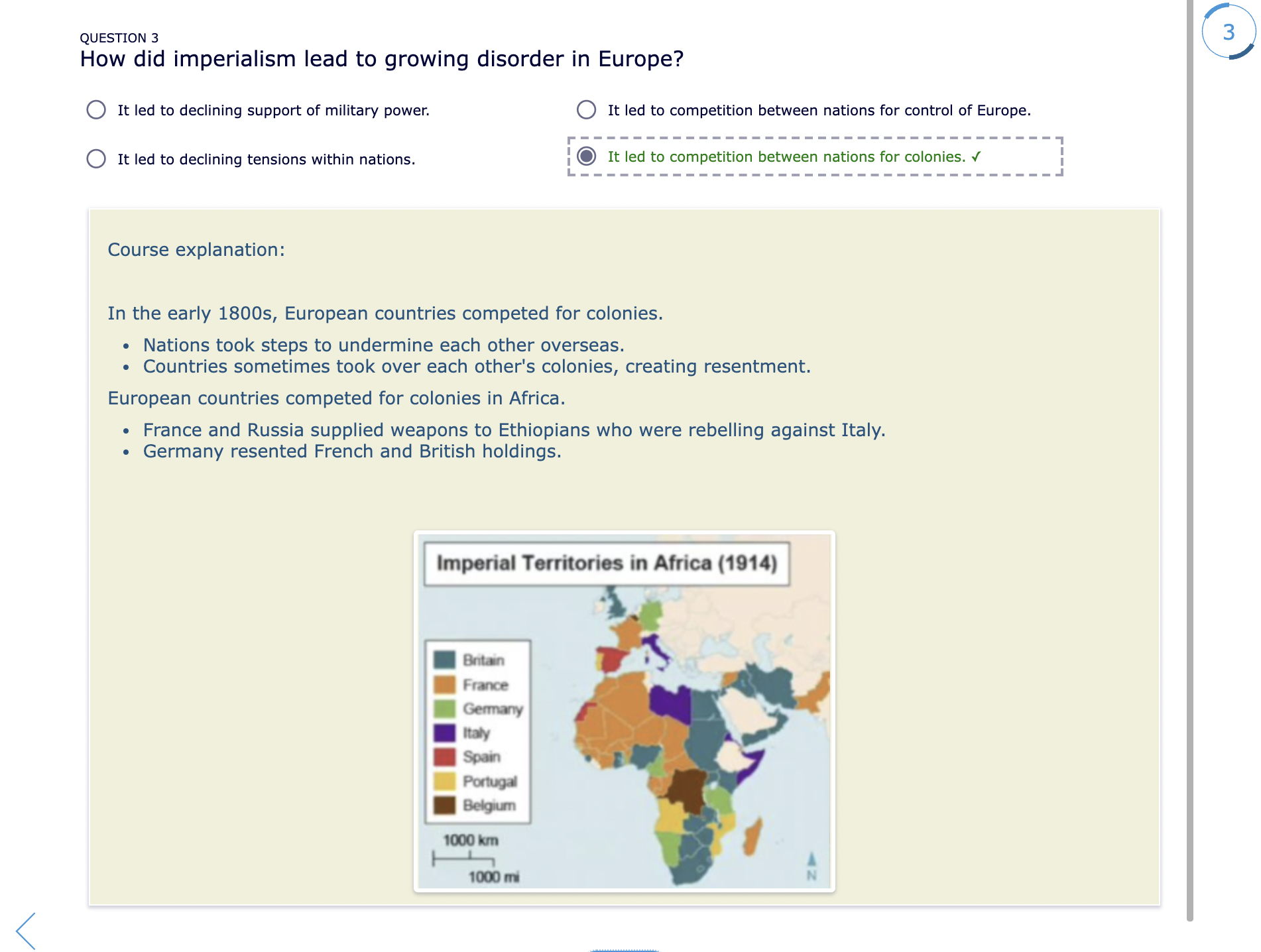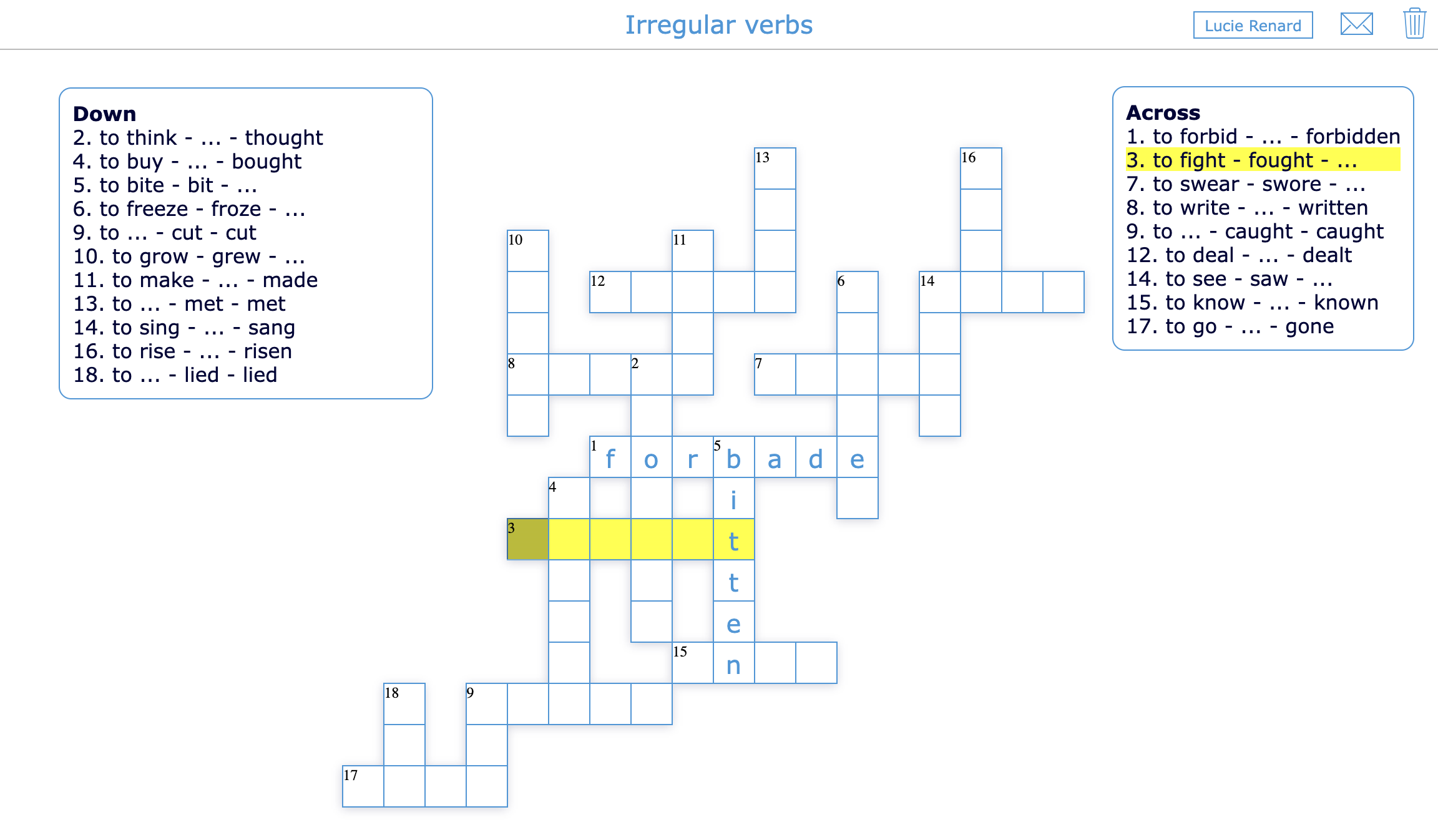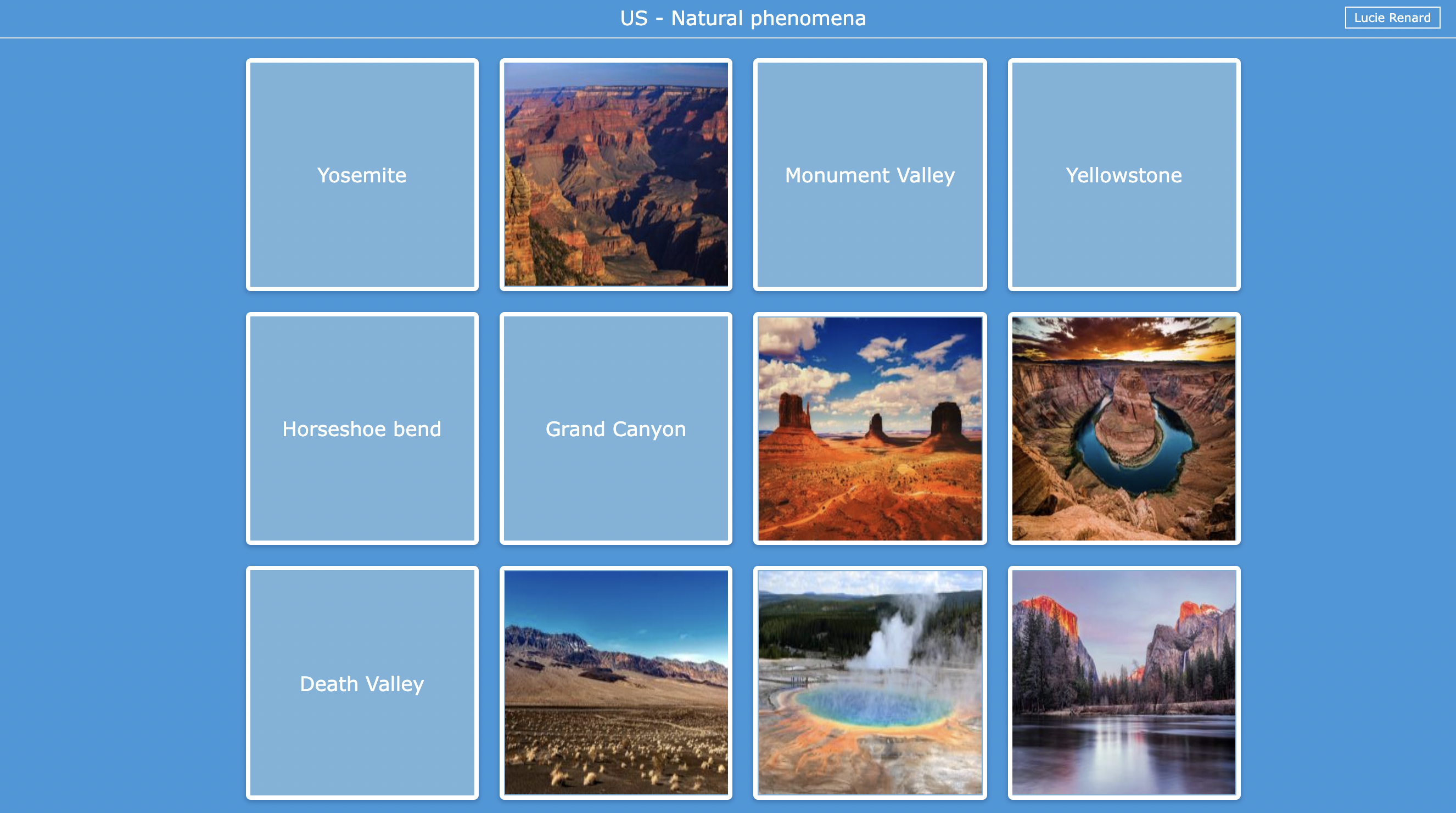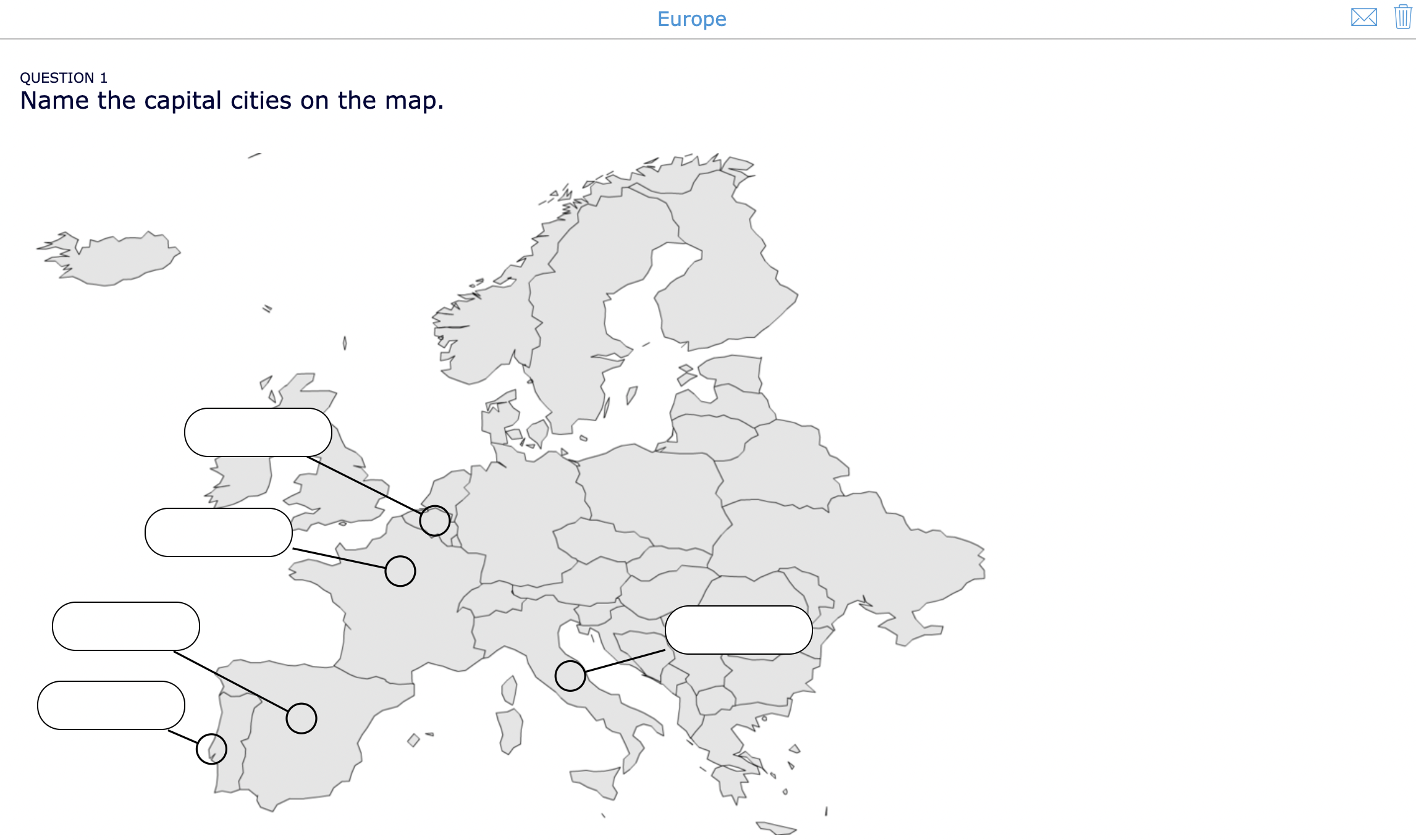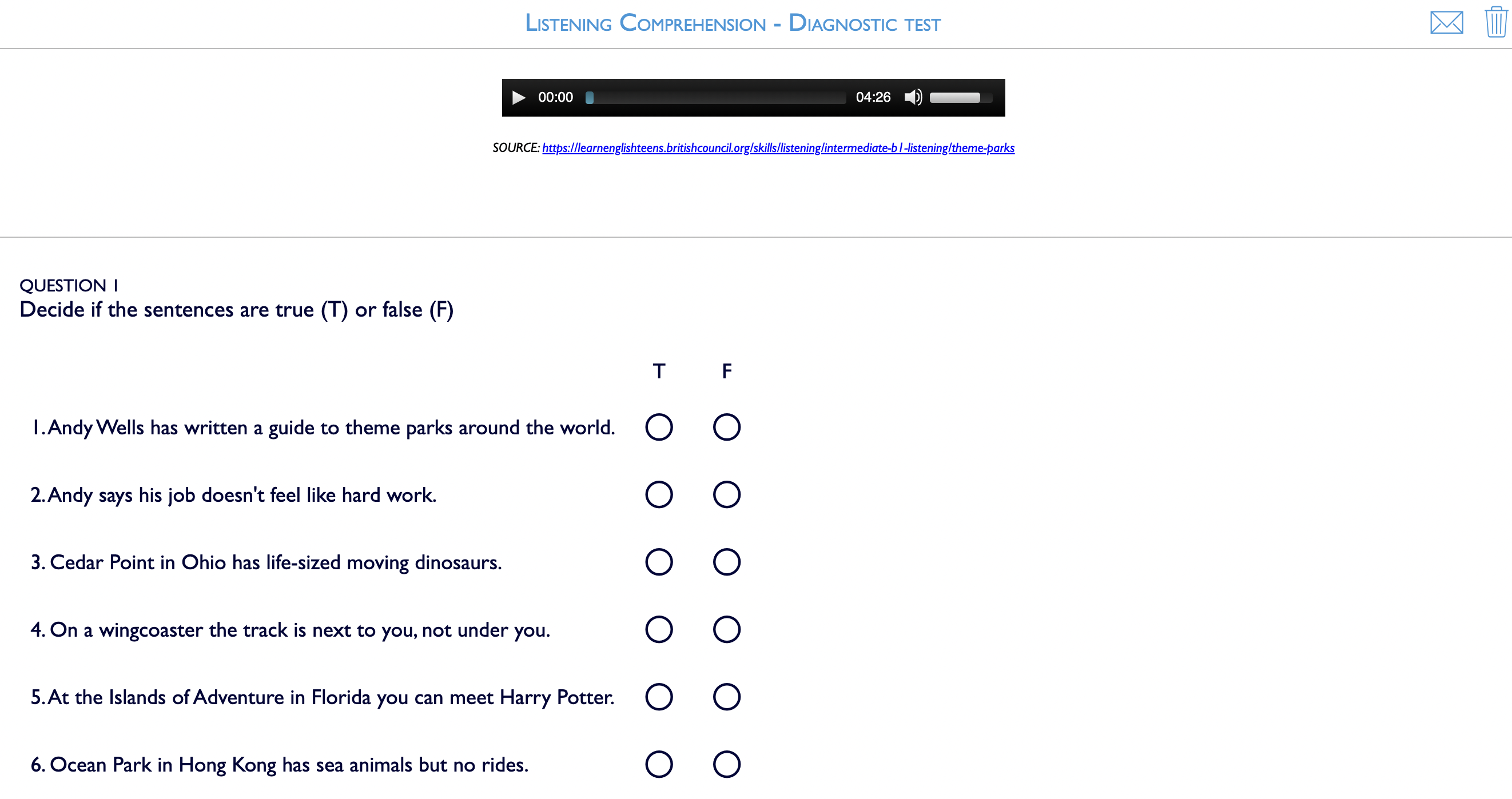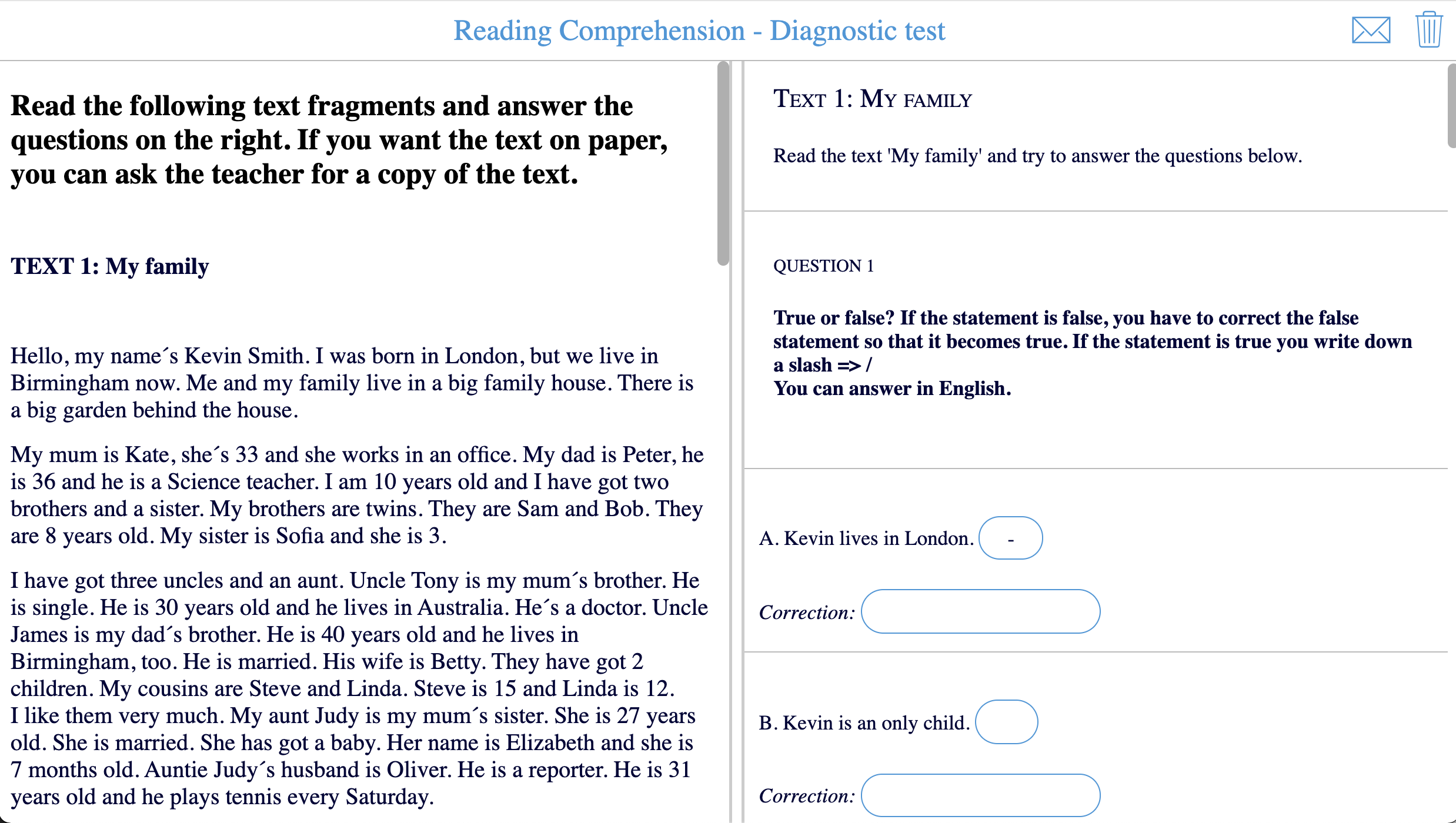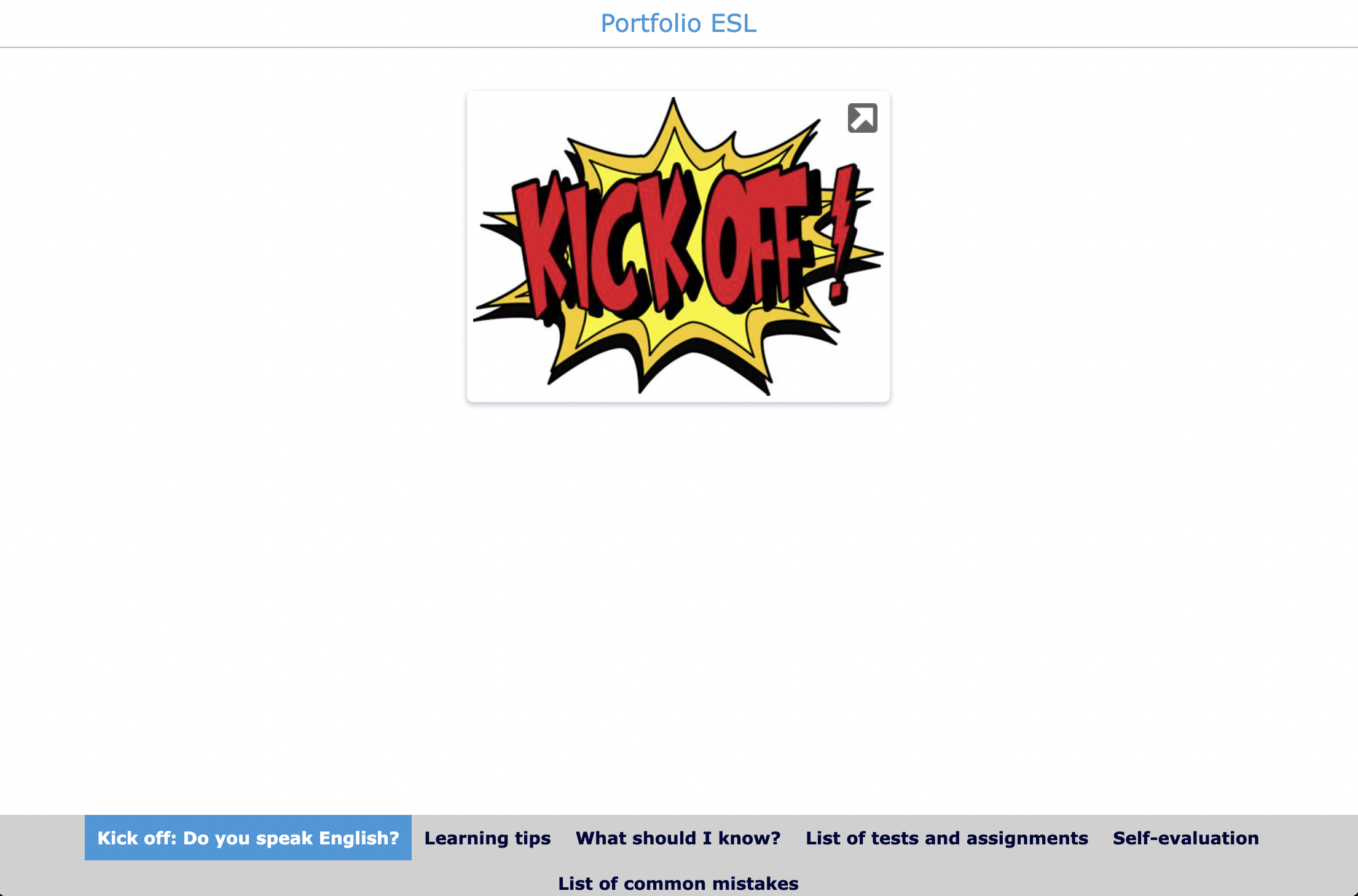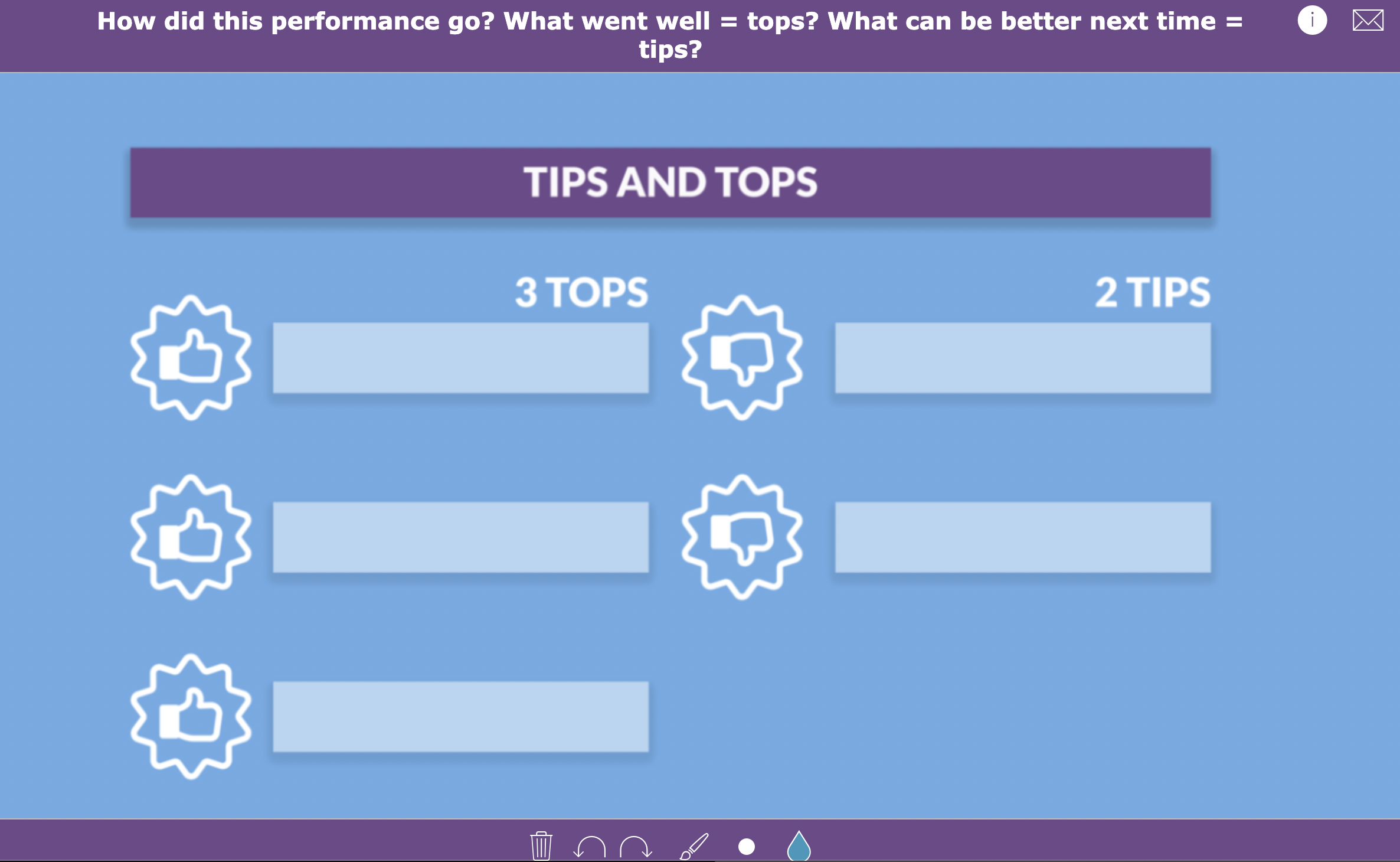The ultimate formative assessment guide for teachers - Classroom tools, tips, and examples
 Lucie Renard —
Lucie Renard —
Formative assessment is gaining importance in our classrooms. Evaluation is not just about a final grade anymore: it’s about pushing your students to get better learning outcomes; it’s about feedback, and growing.
Creating an effective teaching environment with formative assessment techniques and tools is important. In this formative evaluation blog post guide for teachers, I’ll show you everything you need to know about this topic.
This guide is divided into several chapters. Just click on the link below to jump to parts that interest you, or, if you’re new to formative assessment, just read everything. 👀
- What is formative assessment?
- The differences between formative and summative assessment
- Types & examples of formative assessments
- Formative assessment tools
- Formative assessment tips for teachers
- How to give formative feedback
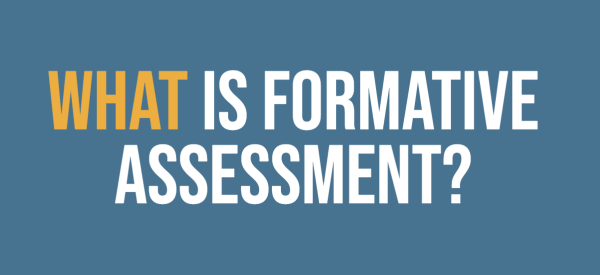
What is formative assessment?
The definition of formative assessment (or formative evaluation) is very clear: Formative assessment is an ongoing process of collecting information on the outcomes, strengths, and weaknesses of your students at any point in their learning process.
Teachers use this information to provide ongoing feedback to students when they are still learning. Feedback should be actionable, so students can use it to improve their learning.
The most important characteristic of formative assessment is that there are no grades! You don’t need to put a mark on a student to measure his capabilities.
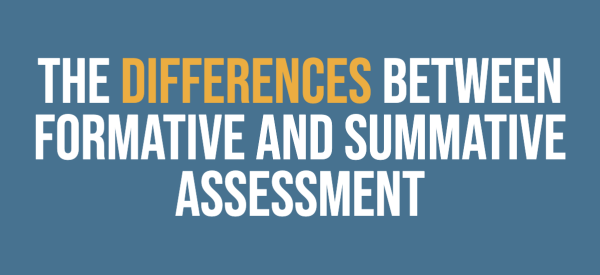
The difference between formative and summative assessment
To show the differences between formative and summative evaluation, we’ve created a clear infographic for you.
Of course, I’ll spill the beans again, here.
Whereas the definition of formative assessment clearly states that it’s an ongoing process of collecting student information and providing feedback, summative assessment is used to evaluate students’ learning at the end of an instructional unit by comparing it against some standard or benchmark.
- Difference 1: When does the assessment take place in a students’ learning process? That’s the first, and biggest difference between the two evaluation strategies. As you already know now, formative assessment is an ongoing activity. The evaluation takes place during the learning process. Not just one time, but several times. A summative evaluation takes place after the learning process when a course or unit is completed.
- Difference 2: What’s the information you get from your students’ learning process? With formative assessment, you try to figure out whether a student’s doing well or needs help by monitoring the learning process. When you use summative assessments, you assign grades. The grades tell you whether the student achieved the learning goal or not.
- Difference 3: What’s the purpose of both evaluation strategies? For formative assessment, the purpose is to improve students’ learning outcomes. For summative assessment, the purpose is to evaluate students’ achievements. In other words: do you want your students to be the best at something, or do you want your students to do better than before each time over and over again?
- Difference 4: What’s the size of the evaluation packages? Formative assessment evaluates your students’ knowledge of small content areas. For example, 3 formative evaluations of 1 chapter. Summative assessment asks students to test their knowledge of complete chapters or content areas. For example, just 1 evaluation at the end of a chapter. The lesson material package is much larger now.
- Difference 5: What’s the nature of the assessment? Formative assessment considers evaluation as a process. This way, the teacher can see a student grow and steer the student in an upwards direction. With summative assessment, it’s harder for you to guide the student in the right direction. The evaluation is already done. That’s why summative assessments or evaluations are considered to be more of a “product”.
You can also take a look at this page to learn more about using BookWidgets for formative and summative assessments.
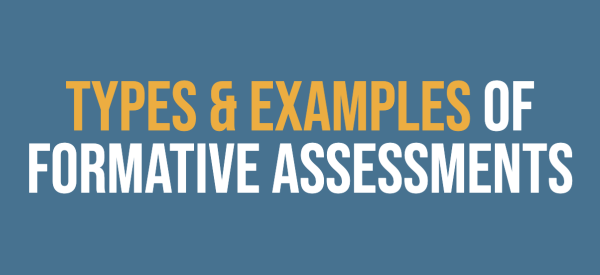
Types and examples of formative assessments
There are many methods to formatively evaluate your students. I’ll sum up a few types, including a digital example of formative assessment.
As this is a technology blog for teachers, I will focus a bit more on the digital ways of formative evaluation. You’ll see that for every traditional method, there’s a digital one too, providing the teacher with even more useful statistics in your students’ learning processes.
You can find and adapt all the digital formative assessment examples in this BookWidgets group folder.
1. Exit Tickets
 Exit slips are the perfect tool for quickly gauging your students’ understanding.
Exit slips are the perfect tool for quickly gauging your students’ understanding.
An exit ticket or exit slip is a sheet of paper or a digital activity with questions that each student answers individually at the end of the lesson.
The questions can be about the lesson content (what they liked about it, what they remember), or about how they felt after the lesson. Exit slips will give you the information you need to help your students improve, and to help you understand how they feel at that exact moment.
There are hundreds of different exit slip types, which makes it a very strong formative assessment tool for all classes and all teachers.
Exit Ticket Example
We’ve created an exit ticket guide with over 60 digital, ready-to-use exit tickets for you to use immediately.
Check out the example below: Exit in 3, 2, 1
This exit ticket is created with BookWidgets, which also has a reporting dashboard for teachers. Here, you’ll see all the submitted results and you can quickly get the information you need, and provide feedback where needed.
2. Self-assessments
 You can use formative assessment for student self-reflection. Ask your students to reflect on their learning, so they can find their strengths and weaknesses and create a plan of action. Students have to take on the teacher role and judge on their learning. This will make judgement seems more fair when they are reflecting on their own. This self-reflection and assessment often helps students see specific areas of improvement without the fear of a letter grade or teacher judgement.
You can use formative assessment for student self-reflection. Ask your students to reflect on their learning, so they can find their strengths and weaknesses and create a plan of action. Students have to take on the teacher role and judge on their learning. This will make judgement seems more fair when they are reflecting on their own. This self-reflection and assessment often helps students see specific areas of improvement without the fear of a letter grade or teacher judgement.
It will take practice and guidance to help the students understand the importance of a thorough self-evaluation.
Self-assessment example
There are many self-assessment strategies. Exit slips are one of them. Take a look at the list with exit tickets above. You’ll certainly find some good ones. Also, check out this post with some creative self-assessment ideas.
Here’s my favorite self-assessment example: The Traffic Light
Students have to reflect on the task and indicate where they’re at. Do they understand everything? Do they still need help? Are they stuck or completely disoriented? They have to indicate and color the traffic light green, orange or red. They also have to indicate why they choose that color.
3. Worksheets and quizzes
 Formative evaluation is about practicing and feedback. Worksheets will do the trick. With a lot of variety within your question types, students have the opportunity to thoroughly practice the targeted standard or goal. Digital worksheets are a great addition to the teacher tech toolbox.
Formative evaluation is about practicing and feedback. Worksheets will do the trick. With a lot of variety within your question types, students have the opportunity to thoroughly practice the targeted standard or goal. Digital worksheets are a great addition to the teacher tech toolbox.
You can use, for example, the BookWidgets worksheet or quiz activity. With over 30 different question types, the possibility to add multimedia, and set up different scoring options, this is the ultimate formative evaluation activity you’ll be able to build.
Some unique formative assessment settings in the BookWidgets Worksheet or Quiz are:
- Immediately show students the correct answers when the activity is finished: this way, students know what they have correct and where they need practicing for improvement.
- Immediately color correct student answers green: students can keep trying and dig deeper in their brain to change the other answers to green as well. Instant feedback can be quite motivating for some learners.
- Enter automatic feedback based on your students’ answers: students with a different outcome will get different feedback, adapted to where they are in their learning process.
- Return student results, solely with your personalized feedback, without grades: students receive personalized feedback are able to try again keeping the timely feedback in mind.
- Allow students to edit their answers: students can change their answers to the questions, based upon the automatic or personalized teacher feedback. This effective formative assessment technique may lead to improved learning outcomes.
- Use LIVE activity while students are working on a worksheet or quiz: Know the exact moment when a student begins to struggle or needs support. This is also a great way to see which students are successful and provide enrichment opportunities or challenges to enhance engagement.
- Provide a rationale to a response which is revealed along with the correct response after each question when your students go through the questions one by one: Rationale feedback allows learners to build knowledge sequentially in the learning process.
Digital formative worksheet example
Teachers have so many evaluation options in BookWidgets. This example utilizes the automatic feedback setting. Give it a try yourself to see how it works and what this can mean for your classroom. First, complete this worksheet really badly. Make some mistakes and click on “show score”. Now, read your feedback and edit your answers. Try to do better. What’s your feedback message now?
Digital formative Quiz example
I have another one for you here, with different settings. This is a history quiz where students have to go through the questions one by one. After each question, they also get the right explanation. Go take a look! 👇
4. Educational games
 Educational formative assessment games are perfect for practicing a variety of skills. Most of the digital educational games are automatically graded. Students will receive instant feedback.
Educational formative assessment games are perfect for practicing a variety of skills. Most of the digital educational games are automatically graded. Students will receive instant feedback.
Students are often more motivated when the teacher says the magical words “complete this crossword puzzle”. Games can also be great for assessing prior knowledge or as an opening lesson reflection.
Digital formative crossword puzzle example
This crossword puzzle is also a retrieval practice strategy, where students have to summon their knowledge about the lesson again. They can complete it, see the results and then submit to the teacher. Go ahead and give it a try 👇
The teacher reviews the results and provides written feedback as needed. Finally, the teacher returns the feedback to the student.
Digital formative Pair Matching example
A pair matching game is solely for practicing, but feedback can be added to motivate and encourage students. And that’s what formative assessment is all about. In this example, students need to match the pairs, and after finishing they receive written and audio feedback from the teacher. The feedback could also be a question, asking your students to reflect on the exercise like in the example below. Go take a look!
These Crossword Puzzle and Matching pairs activities were created using BookWidgets.
5. Pop quizzes
 Chunking learning with many short quizzes is a great formative assessment strategy. This allows students to process new learning immediately and provides the teacher with actionable data for future lessons, review and planning. Mini-assessments allow time for correction and remediation. As your students are still at the start of their learning process, it’s better to steer your students in the right direction as soon as possible.
Chunking learning with many short quizzes is a great formative assessment strategy. This allows students to process new learning immediately and provides the teacher with actionable data for future lessons, review and planning. Mini-assessments allow time for correction and remediation. As your students are still at the start of their learning process, it’s better to steer your students in the right direction as soon as possible.
Digital pop quiz example
Take a look and go through the quiz. In the end, students have to submit their answers to the teacher and also get the right answers to see how they did.
Since your students have to submit this pop-quiz, you can view the results. Below you can see a snapshot of the reporting data of this BookWidgets quiz. It will show you which questions are hard to solve for the complete class. Use this to get your students back on track for the questions they clearly didn’t understand.
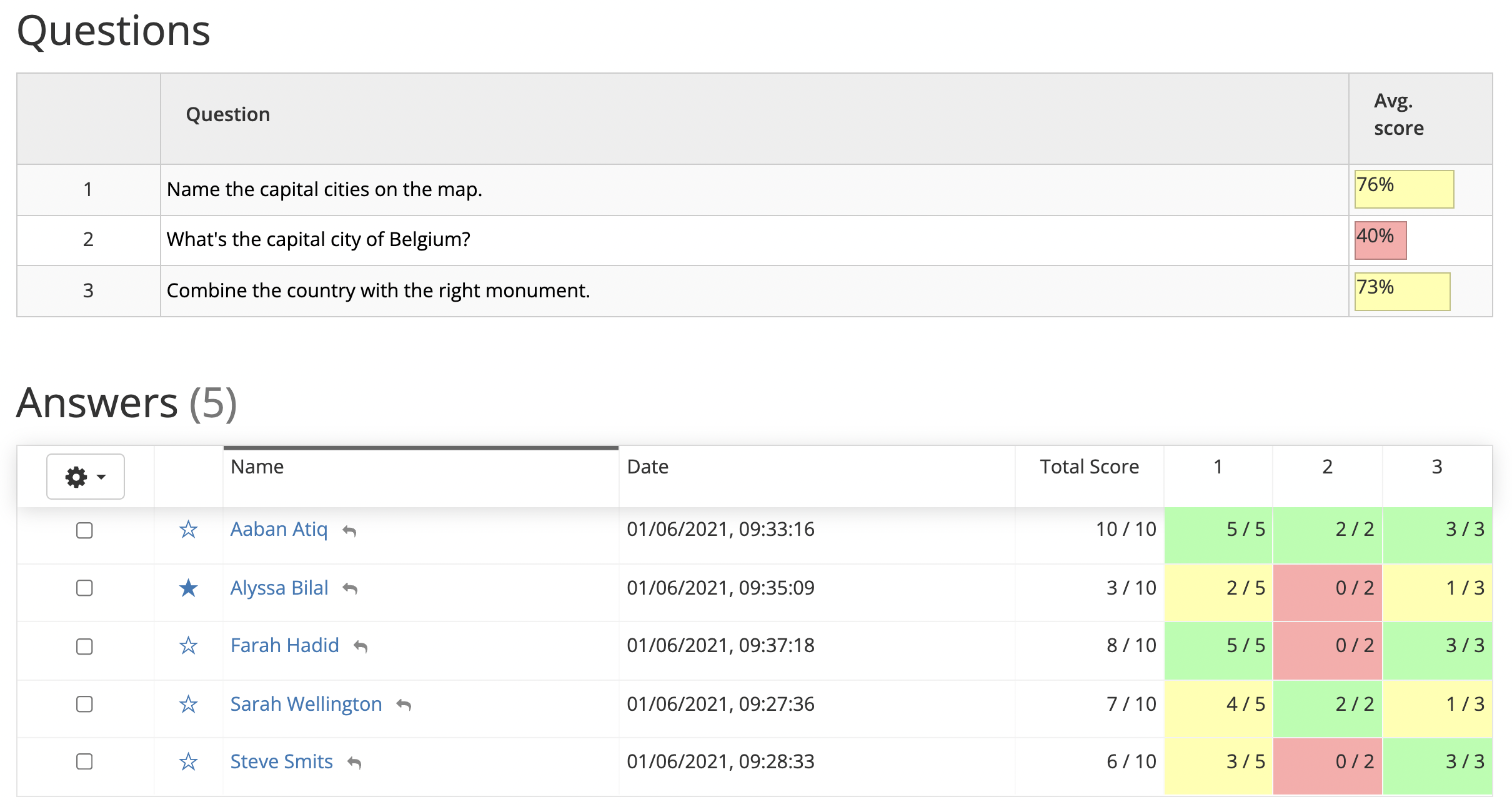
6. Diagnostic tests
 A diagnostic test at the beginning of a course is a great way to understand students’ knowledge. This pre-assessment also provides a clear insights into learning as well as a baseline for student growth. It will provide you with some insights into what your students already know and what knowledge they lack.
A diagnostic test at the beginning of a course is a great way to understand students’ knowledge. This pre-assessment also provides a clear insights into learning as well as a baseline for student growth. It will provide you with some insights into what your students already know and what knowledge they lack.
You can use a diagnostic assessment to discover diverse learners’ needs. It allows you to see data on struggling learners as well as those who will benefit from increased challenges in learning. It is after the diagnostic assessment that differentiated teaching and learning begins.
Diagnostic test example
Here are two diagnostic test examples for teachers of English as a Second Language (ESL). Both are designed to provide the teacher an understanding of students listening and reading comprehension skills.
Diagnostic test example of listening skills
Diagnostic test example of reading comprehension
Ines Neefs, an English teacher in Belgium, created these BookWidgets diagnostic tests.
7. Journals an portfolios
 Journals and portfolios are the perfect way to get a glimpse of your students’ learning processes and the progress they make. They contain small tasks and reflective exercises which allow the teacher to provide feedback for improvement.
Journals and portfolios are the perfect way to get a glimpse of your students’ learning processes and the progress they make. They contain small tasks and reflective exercises which allow the teacher to provide feedback for improvement.
OR, this can be done differently. Here, a portfolio is used for daily self-reflection allowing opportunities for student to stay on task. Self-reflection allows students time to think about their thinking and learning leading to growth. Students should submit reflections to the teacher who in turn provides suggestions on how to try again, improve and even follow up with individual students.
Digital portfolio example
Portfolios can be websites your students build, or a combination of worksheets, collages, and more. For this example, I picked out a special one. It’s a self-assessment portfolio for students that are learning English. They have to keep track of what they learn, what went good, bad and how they are going to improve their learning outcome.
It’s an example created by Sandy Lapere, an English teacher in Belgium, and her team. She created this portfolio entirely with BookWidgets.
8. Peer assessments
 In a peer assessment, the student and their fellow students have to assess a classmate. Students are being evaluated by their peers, not just the teacher.
In a peer assessment, the student and their fellow students have to assess a classmate. Students are being evaluated by their peers, not just the teacher.
Peer assessments have a few important advantages:
- It encourages your students to reflect on their own learning progress and performance,
- It helps students become autonomous learners,
- It encourages students to be more responsible for their own learning,
- It helps students develop their assessment and argument skills,
- It helps students be more aware of their weaknesses and strengths;
- It helps students learn more from each other.
Using their own and fellow students’ feedback, students can move forward with it and do better. Keep in mind that formative peer assessments aren’t about the grades, but about the feedback.
Peer assessment example
This is a simple but fun peer assessment. After an exercise, a performance or presentation, the fellow students need to give some tops and tips to the student in front of the class.
The teacher picks out 3 students to share their tips and tops out loud. The rest of the class send their results to the student in front of the class via e-mail. After sending it to their fellow students, they can delete their answers from the Widget and use it again for other fellow students.
9. Teacher Observation
 As a teacher, your observation skills can help out students at the right time, when they most need your help.
As a teacher, your observation skills can help out students at the right time, when they most need your help.
In your classroom, you should be able to see struggling students and students that need more challenges. Of course, this is very time-intensive, and you can overlook some things.
This is where technology can be helpful. A lot of apps allow you to track student progress while they are working on an assignment. This allows you to immediately swoop in when needed.
Live Widgets observation example
BookWidgets’ Live Widgets function allows you to do just that: follow students’ progress live while they are working on an assignment. The live widgets dashboard shows you how long it took for students to complete an assignment, how well they did on each question, and if they are stuck or not. You can open individual student work as well and see where things go wrong. This is your cue to help out a student and give instant feedback so they can move on.
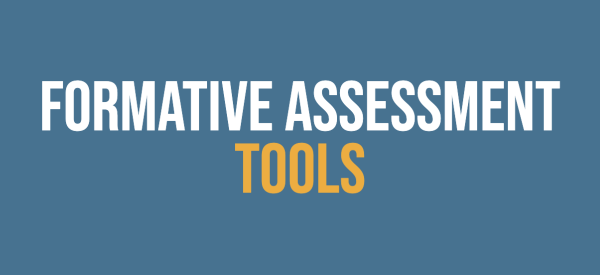
Formative assessment tools for teachers
In the arena of educational technology, you’ll see a lot of quiz and testing apps, but keep in mind that the focus must lie on providing your students with timely, meaningful feedback. The playing field for this type of apps narrows a bit, but there are still plenty of good fish in the sea to choose from.
Here is a list of 10 good formative assessment classroom tools for teachers. Of course, you can find many more formative evaluation tools for your classroom here.
1. BookWidgets
 Once you get started with BookWidgets, you can’t get enough. You probably noticed all the formative assessment examples above. Each and every one of them was created with BookWidgets. That said, you already know the endless possibilities this one tool can bring along.
Once you get started with BookWidgets, you can’t get enough. You probably noticed all the formative assessment examples above. Each and every one of them was created with BookWidgets. That said, you already know the endless possibilities this one tool can bring along.
BookWidgets has a library with over 40 different exercise templates (or widgets). You can create formative exercises like pair matching games or crossword puzzles, and formative assessments like worksheets and quizzes with over 30 different question types.
The BookWidgets Reporting Dashboard makes sure you get the right student statistics and feedback features to support your students’ learning. And, like I already said before, you can also follow student progress live, while your students are working on an assignment, which allows you to quickly steer students in the right direction.
2. EdPuzzle
 Edpuzzle is a formative assessment tool to track students’ comprehension of videos while watching.
Edpuzzle is a formative assessment tool to track students’ comprehension of videos while watching.
Add more value to videos in your lessons. They’re not just an introductory tool anymore. With EdPuzzle you can ask your students lots of questions during the video, so you can test their understanding right away and point out some important parts in the video.
Again, here you get some statistics to see how many times your students saw the video and how well they understood it. As a teacher, you use these statistics and address topics that are still a bit hard to understand for your students.
3. Seesaw
 Seesaw is probably the best formative student portfolio tool out there. You give your students assignments (it can also be an EdPuzzle or BookWidgets task) and you give feedback on your students’ work within Seesaw.
Seesaw is probably the best formative student portfolio tool out there. You give your students assignments (it can also be an EdPuzzle or BookWidgets task) and you give feedback on your students’ work within Seesaw.
You can even let parents join in on the conversation. They can see their children’s tasks and comment on them too.
4. Classkick
 With classkick, teachers can create activities with drawings, text, images, audio, links, and videos and share them with their students. Now, your students can complete the assignments. While they are working, they can raise their hand if they need help and the teacher can follow up on their work in real-time.
With classkick, teachers can create activities with drawings, text, images, audio, links, and videos and share them with their students. Now, your students can complete the assignments. While they are working, they can raise their hand if they need help and the teacher can follow up on their work in real-time.
Teachers provide personalized, real-time feedback and grading with an array of tools–directly on the canvas, in classkicks’ help center, or with pointed stickers. Students can even ask their peers for help anonymously.
5. Flipgrid
 Flipgrid is a video discussion app and provides a safe, accessible space where students can explore new ideas, connect with others, get creative, and contribute to meaningful discussions.
Flipgrid is a video discussion app and provides a safe, accessible space where students can explore new ideas, connect with others, get creative, and contribute to meaningful discussions.
Teachers can set up assignments where students need to respond with a video recording. Students can also respond to each other’s videos.
6. Wooclap
 Wooclap is a formative evaluation tool that sparks engagement. With this tool, you motivate your students to interact and participate with the learning materials. All your students have to think, not just the one that gets the question.
Wooclap is a formative evaluation tool that sparks engagement. With this tool, you motivate your students to interact and participate with the learning materials. All your students have to think, not just the one that gets the question.
The teacher asks a question, all your students have to answer it on their device and the results show up, on the screen, immediately.
Use this tool for anonymous surveys, brainstorm sessions, questions about the lesson material, Q&A sessions, and much more. Wooclap has a lot of fun live question formats.
7. Formative
 The name says it all. This app is all about formative assessments. You create and assign an activity to your students and while your students are working on it, you can give live feedback.
The name says it all. This app is all about formative assessments. You create and assign an activity to your students and while your students are working on it, you can give live feedback.
The feedback features are really handy (written, audio, video, …) and your students get a notification in case they look over the teachers’ feedback. As a teacher, you can also track student progress in real-time.
8. Nearpod
 Nearpod is a slide-based formative assessment tool. Add some slides, slide by slide, or choose a special Sway template you can adjust.
Nearpod is a slide-based formative assessment tool. Add some slides, slide by slide, or choose a special Sway template you can adjust.
All those slides make an amazing interactive presentation. Especially if you add activities like quizzes, open-ended questions, polls, draw questions, and others.
When your presentation is ready, your students can opt-in by entering a code in their Nearpod app or just click on the assigned link in Google Classroom.
You, as a teacher, are in charge of the presentation. when you switch to another slide, the presentation on your students’ devices will also switch to that slide.
When your students’ have to make a quiz or a poll, they can just do that on their screen, as it is a part of the presentation. The answers are gathered live! So you can see immediately what your students answered.
9. Peardeck
 Just like with Nearpod, PearDeck lets you create an interactive slideshow. Students sign into your PearDeck lesson using the unique code, and the teacher sets the pace of the presentation: when you go to the next slide, all your students will be guided to the next slide as well, making sure they are on the right slide.
Just like with Nearpod, PearDeck lets you create an interactive slideshow. Students sign into your PearDeck lesson using the unique code, and the teacher sets the pace of the presentation: when you go to the next slide, all your students will be guided to the next slide as well, making sure they are on the right slide.
You can even add interactive elements such as quiz questions and whiteboards. Every student can answer these in real-time on their own device. This truly engages students, and you’re sure that your students are participating as well.
The one thing I’m most excited about here is the Google Slides Add-on. Add Pear Deck activities to your google slides to make them even more interactive
10. Padlet
 Padlet can be used in so many different ways. That’s why it should be on this formative assessment tools list.
Padlet can be used in so many different ways. That’s why it should be on this formative assessment tools list.
With Padlet you can create an online post-it board that you can share with any student or teacher you want. Just give them the unique Padlet link. Padlet allows you to insert ideas anonymously or with your name. It’s easy to use and very handy.
Whoever has the Padlet board opened on his device, can see what’s on it and what everyone is writing. Students just have to start adding little sticky notes online. They can see all the ideas gathered on the teacher board immediately. The teacher can allow other comments as well, which makes it the perfect tool for peer assessment.
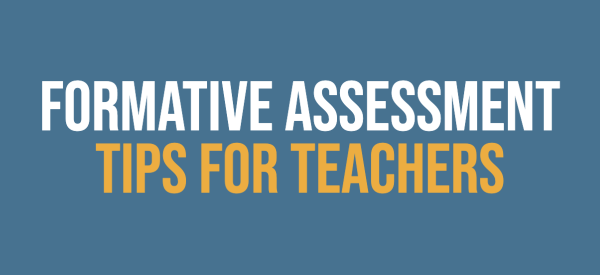
Formative assessment tips for teachers
As there are so many ways to do formative assessment, you might need some handy tips. Whatever formative assessment strategy you use in your classroom, these tips will help you out, and prevent you from making mistakes.
1. Actionable
 Make sure your formative assessment is always actionable. It must be designed so that student responses clearly demonstrate mastery of the skills and content, or they show exactly where students are lacking understanding.
Make sure your formative assessment is always actionable. It must be designed so that student responses clearly demonstrate mastery of the skills and content, or they show exactly where students are lacking understanding.
2. Educational technology
 Take a look at the list above. Many of these apps reveal formative evaluation statistics that you can’t see without them, or it will take a lot of time to reveal them. Follow up students live, when they are working on assignments, track their progress, help them out when they need it, give instant feedback and explanation, and so on.
Take a look at the list above. Many of these apps reveal formative evaluation statistics that you can’t see without them, or it will take a lot of time to reveal them. Follow up students live, when they are working on assignments, track their progress, help them out when they need it, give instant feedback and explanation, and so on.
3. Show the difficult parts
 It’s helpful to see if students understand why something is incorrect or why a concept is hard to master. Ask students to explain the most difficult part of the lesson. This is the place where things got confusing or where they still lack clarity. As a teacher, you clearly know what is difficult for your students. You can focus your explanation on this part.
It’s helpful to see if students understand why something is incorrect or why a concept is hard to master. Ask students to explain the most difficult part of the lesson. This is the place where things got confusing or where they still lack clarity. As a teacher, you clearly know what is difficult for your students. You can focus your explanation on this part.
4. QR-corner
 Formative assessment is about improving every students’ learning process. Those learning processes are not parallel. To tailor your students’ needs, it’s a good idea to add a QR-corner. Create a binder with a variety of extra exercises on various topics and difficulty levels. When students need help or greater challenges, you send them to the QR-corner (with abbout 3 tablets) and let them scan an extra exercise on their level.
Formative assessment is about improving every students’ learning process. Those learning processes are not parallel. To tailor your students’ needs, it’s a good idea to add a QR-corner. Create a binder with a variety of extra exercises on various topics and difficulty levels. When students need help or greater challenges, you send them to the QR-corner (with abbout 3 tablets) and let them scan an extra exercise on their level.
With BookWidgets, you can even bundle the exercises of the same topic into a WebQuest, creating just 1 QR-code for a complete set of extra exercises. You can also use a planner for this.
5. Video instructions
 Just like the QR-corner with extra exercises, you can do the same with video instructions. When a student doesn’t understand a concept, and can’t successfuly complete the exercises yet, they can go to the video instruction corner, and review the new concepts at their own pace again.
Just like the QR-corner with extra exercises, you can do the same with video instructions. When a student doesn’t understand a concept, and can’t successfuly complete the exercises yet, they can go to the video instruction corner, and review the new concepts at their own pace again.
6. Mastery learning
 Mastery learning focuses on mastering a topic before you move on to a more advanced one. Students can learn at their own pace and eventually reach their learning goals, like everyone else. Learn more about mastery learning in this post. Setting up mastery learning routes can be very time-consuming. But formative assessment apps like BookWidgets make it possible to completely automate them, including feedback.
Mastery learning focuses on mastering a topic before you move on to a more advanced one. Students can learn at their own pace and eventually reach their learning goals, like everyone else. Learn more about mastery learning in this post. Setting up mastery learning routes can be very time-consuming. But formative assessment apps like BookWidgets make it possible to completely automate them, including feedback.
7. Differentiate instructions
 Teaching a new topic is always tricky. Not every new concept gets absorbed by your students as you would want it. Good instruction are key to student success. A good start will lead to a smooth learning process.
Teaching a new topic is always tricky. Not every new concept gets absorbed by your students as you would want it. Good instruction are key to student success. A good start will lead to a smooth learning process.
Check out this BookWidgets blog post for 20 ways to give differentiated instructions. These instructions will give students the chance to learn at their own pace or according to their own needs, competencies, and interests. Differentiated instruction strategies make sure students don’t get left behind when the teacher moves forward.
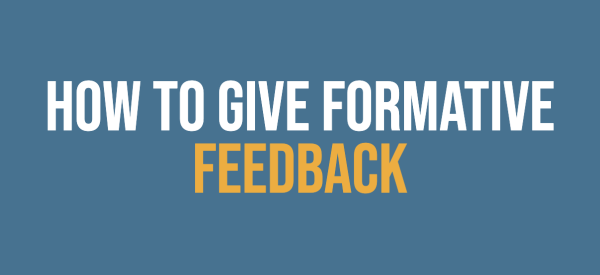
How to give formative feedback
When you’re giving ongoing and regular feedback, you can speak of formative feedback. Formative feedback lies at the base for improvement and is crucial when it comes to formative assessment. Students are in need of ongoing information to identify their strengths and target areas so they know how to improve their learning process.
Make sure to read this comprehensive post about giving meaningful feedback. It will give you many good insights.
Giving meaningful feedback is not always easy. But there are a few feedback rules. Below, I give you a handy overview of the do’s and dont’s of giving feedback. These awesome tips are from Susan M. Brookhart. You can read more about it in her book: “How to Give Effective Feedback to Your Students.”
| DO | DON’T |
|---|---|
| Select a few main points about a paper for comment. Nothing more. | Return a student’s paper with every error edited. |
| Give feedback on important learning targets. | Write comments in a paper that are longer than the paper itself. |
| Comment on at least as many strengths as weaknesses. | Write a lot of comments in poor-quality papers and almost nothing on good-quality papers. |
| Return an assignment shortly after or the next day. | Return an assignment two weeks after it was given. |
| Give immediate responses to questions. | Ignoring mistakes or misconceptions. |
| Give immediate responses to student misconceptions. | Go over a test or assignment when the unit is over and there’s no chance to show improvement. |
| Use written feedback for comments that students need to be able to save and remember. | Speak to students to save yourself the trouble of writing. |
| Use oral feedback for students who don’t read well. | Give written feedback to students who don’t read well. |
| Communicate with an individual, giving information specific to the individual performance. | Use the same comments for all students. |
| Give group or class feedback when the same mini-lesson or reteaching session is required for a number of students. | Never give individual feedback because it takes too much time. |
| Make comments about the strengths and weaknesses of a performance. | Make comments that bypass the student (e.g., “This is hard” instead of “You did a good job because …”). |
| Make comments or recommendations about the work process you observed that would help improve the work. | Make criticisms without offering any insights into how to improve. |
| Avoid personal comments. | Make personal compliments or digs (e.g., “How could you do that?” or “You idiot!”). |
| Compare work to student-generated rubrics. | Put up wall charts that compare students with one another. |
| Compare student work to rubrics that have been shared ahead of time. | Give feedback on each student’s work according to different criteria or no criteria. |
| Identify for students the strengths and weaknesses in the work. | Telling students the work is “good” or “bad”. |
| Express what you observe in the work. | Put a grade on work intended for practice or formative purposes. |
| Be positive. | Punish or denigrate students for poor work. |
It’s a wrap!
I hope you now have all the information about formative assessment you need. Let us know what tips you’ve just learned you’re certainly going to use in your classroom! Start the formative evaluation conversation, mention us on Twitter, @ibookwidgets, and make sure to share this post with fellow teachers.
Hooked on BookWidgets? Join our Teaching with BookWidgets Facebook community 💖. I’m Lucie Renard, and I’d love to connect with you on LinkedIn or Twitter too!
Last but not least, don’t forget to create your first formative evaluation with Bookwidgets here. 👇
